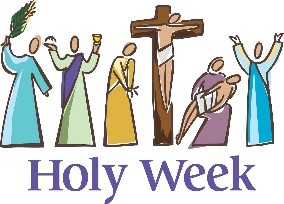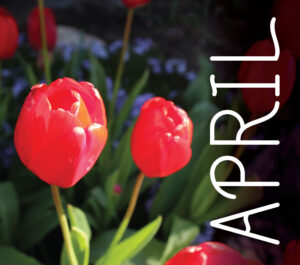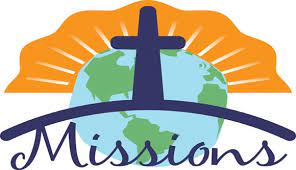
Why Holy Week?
Why does Jesus have to die? There are multifaceted pieces to the most important week in our Judeo-Christian faith. Easter cannot happen without Good Friday, which is preceded and given meaning by the Last Supper (New Covenant in Jesus blood) that we remember (practice) each month (communion). It all begins with Palm Sunday. Jesus must die, so that we can live (with Him eternally). Join us for this sacred time, schedule below. Can you identify the 6 images above of Holy Week?
Sun. April 13th: Palm Sunday – Jesus enters Jerusalem to begin the last week of his life as the redeemer king “Hosanna” save us “Son of David” the crowd cheers. By the end of the week the cheers turn to jeers and “crucify him.” We’ll have palms to wave and celebrate (and take home), one of few occasions in scripture that Jesus allows the crowd to acknowledge his royal presence.
Friday April 18th at 7 PM: Good Friday – Without this solemn service there is no Easter celebration. I would encourage you to attend and participate. There will be an opportunity to carry the cross starting outside and bringing the cross into the sanctuary. We will here Jesus’ 7 statements from the cross as well as correlating meditations read by congregation members (sign up to read). It is the most powerful service on the Christian calendar and gives more depth and richness to the joy of Easter.
Sun. April 20th at 9 AM: Easter Sunday – We will adorn (place) flowers on the cross during worship. We’ll celebrate Jesus’ resurrection through special music and scripture. “He lives” and so do we (eternally), if we believe that Jesus died for our sins and rose again. There’ll be an Easter egg hunt following worship.
Sunday April 27th: New members joining the church.
Blessings, Pastor Michael

-
Palm/Passion Sunday, April 13th
-
Maundy Thursday, April 17th
-
Good Friday, April 18th
-
Easter Sunday, April 20th
The Blessing of Fellowship
Between the death of Christ and the Last Day it is only by gracious anticipation of the last things that Christians are privileged to live in invisible fellowship with other Christians. It is by the grace of God that a congregation is permitted to gather visibly in this world to share God’s Word and sacrament. Not all Christians receive this blessing. The imprisoned, the sick, the scattered lonely, the proclaimers of the Gospel in heathen lands stand alone. They know that visible fellowship is a blessing. —Dietrich Bonhoeffer
Easter Insights
Did you know the word Easter never appears in the Bible? It may be a variant of the name Eostre, a pagan fertility goddess who symbolized rebirth and spring. Eostre stems from the Proto-Germanic word for dawn, which Christians connect to Jesus’ victory over darkness.
The ancient tradition of Easter baskets also has ties to Eostre, whose symbol was a rabbit. Christians likely adapted the practice of bringing eggs and seeds as an offering to Eostre. Some Orthodox Christians continue a tradition of having a priest bless baskets of Easter food on Holy Saturday. Items usually hold special symbolism, such as Paska bread, cured meats, colored eggs, salt, horseradish and lamb-shaped butter.
Fun and Laughter
“Here cometh April again,” said poet Charles Lamb (1775-1834). “And as far as I can see, the world hath more fools than ever.”
That second observation may or may not be true, but April does indeed begin on a lighter note. April Fools’ Day, which is filled with practical jokes, can also be a reminder to thank God for laughter, joy, funny stories, children’s antics and other things that make us smile.
Then one week after Easter, on what’s known as Holy Humor Sunday, some churches celebrate that God played the supreme joke on death. Jesus’ resurrection is cause for joy, smiles and, yes, laughter. Even the Almighty joins in: “He who sits in the heavens laughs” (Psalm 2:4).
“My Easter Dove”
There came a dove, an Easter dove,
when morning stars grew dim;
It fluttered round my lattice bars,
to chant a matin hymn.
It brought a lily in its beak,
aglow with dewy sheen;
I caught the strain, the incense breathed,
and uttered praise between.
It brought a shrine of holy thoughts
to calm my soul that day;
I caught the meaning of the note,
why did it fly away?
Come peaceful dove, sweet Easter dove!
Above earth’s storm and strife,
sing of the joy of Easter-tide,
of light and hope and life. —Henrietta Cordelia Ray (1849-1916)
Clothed in Compassion
In Colossians 3:12, Paul tells us to clothe ourselves in compassion. What does that look like? Consider these parallels to actual clothes:
Each morning, we select outfits depending on our activities and who we’ll see. For example, clothing looks different for a day of chores than for worship on Easter Sunday. To maintain our wardrobe, we regularly clean, fold and repair items. Likewise, each day we choose how we’ll treat others. Our approach to each activity or interaction might differ, as we seek to represent Christ well. And to maintain an effective witness, we often must renew and “mend” our attitude.
One more comparison: Look in your closet. Have you updated your clothes lately? Compassion looks different than it did decades ago. While staying grounded in biblical truth, let’s adapt the care we wear — making it “fit” better for today’s generations. —Janna Firestone

April Mission of the Month: Senior Care Volunteer Network
